Na produção de peças complexas, ambos Usinagem CNC e fundindo Os processos apresentam algumas proposições de valor. No entanto, Considere certos aspectos na seleção de um processo adequado para o projeto. Estes podem ser os requisitos do material, taxa de produção, e custo, entre outros. Então, Este guia também terá como objetivo fornecer uma visão geral sobre as principais diferenças entre a usina de moldagem versus versus CNC. Também discutirá suas vantagens e desvantagens, e o que precisa ser considerado ao escolher entre usinagem CNC e fundição.
O que é usinagem CNC?
CNC (Controle Numérico Computadorizado) A usinagem é uma forma de produção conhecida como fabricação subtrativa, ou seja. a eliminação do material de um bloco de metal. Essa eliminação é geralmente chamada de peça para formar uma parte acabada com geometria específica. Inclui materiais de corte na forma desejada com a ajuda de máquinas controladas por computador. Essas máquinas podem ser moinhos, Torneiras, e roteadores. CNC ou usinagem de controle numérico de computador é altamente valorizado por sua precisão, versatilidade, e versatilidade em escolha de material, incluindo metais, plásticos, e compósitos.
O que é fundição sob pressão?
O processo de fundição envolve a injeção de material de fluido em uma cavidade de molde através da aplicação de alta pressão. O molde geralmente fabricado a partir de aço, permitindo a formação de peças que são complexas em forma e com excelentes recursos. Depois que o metal esfriou e ganhou sua solidez, A peça é então expulsa do molde. É usado onde grandes quantidades da mesma parte metal como metais não ferrosos estão sendo fabricados. Esses materiais podem ser alumínio, zinco, e magnésio.
Considerações materiais: Qual processo atende às suas necessidades?
Escolher o material certo para o seu projeto é um fator importante ao decidir entre usinagem CNC e fundição.
Usinagem CNC: Uma ampla seleção de material
✅ Trabalha com uma variedade de materiais, Incluindo:
- Metais: Alumínio, aço inoxidável, titânio, latão, cobre, magnésio, etc..
- Plásticos: abdômen, OLHADINHA, Nylon, Policarbonato, Acrílico, etc..
- Compósitos e até madeira.
💡 Melhor para:
- Alta resistência, Materiais de alto desempenho.
- Aplicações especializadas que exigem propriedades específicas (por exemplo., resistência à corrosão, resistência ao calor).
- Prototipagem e produção pequena em lote com flexibilidade de material.
Fundição sob pressão: Limitado a metais não ferrosos
✅ Materiais comuns de fundição incluem:
- Alumínio(leve, resistente à corrosão, usado em aeroespacial e automotivo).
- Zinco(alta precisão, Bom para pequenas partes).
- Magnésio(forte, leve).
💡 Melhor para:
- Produção de alto volume de peças de metal.
- Soluções econômicas para alumínio, zinco, ou produtos de magnésio.
- Quando são necessárias altas condutividade térmica ou propriedades elétricas.
🔴 Limitações:
- Não suporta materiais plásticos ou compostos.
- Menos flexibilidade do material em comparação com a usinagem CNC.
Precisão e complexidade: Comparando tolerâncias e recursos de design
Usinagem CNC: Precisão e complexidade incomparáveis
✅ A usinagem CNC é ideal para Designs de alta precisão e complexos, com tolerâncias tão apertadas quanto:
🔹 ± 0,0005 polegadas (± 0,0127 mm)
💡 Melhor para:
- Aeroespacial, médico, e peças automotivas que exigem extrema precisão.
- Componentes com detalhes complexos, cavidades profundas, bordas nítidas, e geometrias complexas.
Fundição sob pressão: Consistência em geometrias mais simples
✅ A fundição de matriz produz peças uniformes com tolerâncias normalmente entre:
🔹 ± 0,002 polegadas (±0,05 mm) a ± 0,005 polegadas (± 0,13 mm)
💡 Melhor para:
- Produção em massa de peças com formas consistentes e superfícies suaves.
- Projeta isso Não requer extrema precisão ou detalhes complexos.
🔴 Limitações:
- Não é ideal para designs ultra-complexos.
- Encolhimento e porosidade pode ocorrer, exigindo pós-formação em alguns casos.
Volume de produção: Escalabilidade e custo-efetividade
Usinagem CNC: Melhor para volumes baixos a médios
✅ Adequado para:
- Prototipagem e produção de pequeno lote
- Peças personalizadas e pontuais
- High Mix, fabricação de baixo volume
💲 Fator de custo:
- Maior custo por parte do que morrer de elenco.
- Não é necessário molde, Portanto, os custos iniciais de configuração são mais baixos.
Fundição sob pressão: Melhor para produção de alto volume
✅ Adequado para:
- Produção em massa (milhares a milhões de unidades).
- Eletrônica de consumo, automotivo, e peças de hardware.
💲 Fator de custo:
- Alto custo inicial de molde, mas baixo custo de produção por unidade.
- Quanto mais peças você produz, O lançamento mais econômico se torna.
🔴 Limitações:
- Não é econômico para produção de baixo volume Devido a altos custos de molde.
- Alterações de design requerem um novo molde, adicionando as despesas.
Acabamento de Superfície e Estética
Usinagem CNC: Acabamentos de superfície superiores
✅ Produz mais suave, Acabamentos de alta qualidade logo após a máquina.
✅ Opções de acabamento adicionais: polimento, anodização, jateamento de contas, pintura.
💡 Melhor para:
- Produtos que exigem um Premium, aparência polida.
- Médico, luxo, e aplicativos de alto desempenho.
Fundição sob pressão: Uniforme, mas pode exigir pós-processamento
✅ Bom acabamento superficial mas geralmente exige lixar, revestimento em pó, ou polimento.
✅ Can integrar texturas, logotipos, e marcações diretamente no molde.
💡 Melhor para:
- Produção em massa onde a consistência estética é importante.
🔴 Limitações:
- Pode mostrar Pequenas imperfeições, porosidade, ou encolhimento da superfície.
Durabilidade e resistência: Qual processo oferece mais?
Usinagem CNC: Alta resistência, Peças duráveis
✅ Partes mais fortes Devido ao material de tarugos sólidos (Sem porosidade ou pontos fracos).
✅ personalizável reforços para áreas propensas a estresse.
💡 Melhor para:
- Aplicações de alto estresse no aeroespacial, médico, e máquinas industriais.
Fundição sob pressão: Durável, mas limitado a materiais de fundição
✅ Forte, Peças de metal leve com boa estabilidade dimensional.
✅ Paredes mais finas possíveis, fazendo peças mais leve que os usinados.
🔴 Limitações:
- Mais fraco que peças usinadas Devido à porosidade e limitações do material.
- Não é adequado para cargas extremas ou resistência ao impacto.
Personalização e Flexibilidade: Qual processo se adapta melhor?
Usinagem CNC: Altamente personalizável
✅ Projetos facilmente modificados (Basta atualizar o software, Nenhuma ferramenta necessária).
✅ Ideal para protótipos e designs iterativos.
💡 Melhor para:
- Peças únicas personalizadas, R&D, e indústrias que exigem modificações frequentes.
Fundição sob pressão: Melhor para fixos, Produção de alto volume
✅ Moldes duram milhares/milhões de unidades.
✅ Peças consistentes com controle de processo apertado.
🔴 Limitações:
- Caro para modificar moldes(Não é ideal para necessidades de design flexíveis).
Comparação de custos: Usinagem CNC vs.. Fundição sob pressão
| Fator | Usinagem CNC | Fundição sob pressão |
| Precisão | ± 0,0005 polegadas | ± 0,002 para 0.005 polegadas |
| Escolhas materiais | Metais, plásticos, compósitos | Alumínio, zinco, magnésio |
| Volume de produção | Baixo a médio | Alto volume |
| Custo de configuração | Baixo | Alto (Os moldes são caros) |
| Custo por parte | Mais alto | Menor para lotes grandes |
| Costumização | Muito flexível | Limitado quando o molde é feito |
| Força | Mais forte, Sem porosidade | Pode ser mais fraco com porosidade |
| Acabamento de superfície | Excelente | Bom, pode precisar de pós-processamento |
Vantagens e desvantagens da usinagem CNC
A seguir estão os prós e os contras da usinagem CNC. Isso nos ajudará a entender como a usinagem CNC é melhor para nossos projetos e suas limitações.
Prós:
- Alta precisão e exatidão.
- Pode ser usado com muitos materiais diferentes e muitas cores.
- Aplicável para empresas que produzem níveis moderados de unidades com variabilidade baixa a média.
- Tempo mais rápido para implantar e reduzir o tempo de entrega.
- Flexibilidade nas modificações de design.
Contras:
- Este processo consome muitos materiais para chegar ao produto final. Portanto, Isso leva ao desperdício.
- Diferentes estruturas de custo para produção em massa são baseadas no custo total por parte em uma operação de produção em massa. Este custo é maior para um grande número de operações executadas.
- Claro, Trabalhar horas extras em peças complicadas é outra questão crítica a considerar na usinagem.
- Se a ferramenta for usada apenas e a técnica não for implementada nas máquinas existentes. É limitado à mobilidade da ferramenta.
- Geometrias que envolvem eclosões e outras estruturas, pode precisar de várias operações para serem concluídas.
Vantagens e desvantagens do elenco de Die
A seguir estão os prós e os contras da fundição:
Prós:
- Econômico para produção de alto volume.
- Altos detalhes e a possibilidade de fazer formas complicadas, Devido a paredes finas.
- Não há necessidade de re-modar o que reduz o uso de mais material do que o necessário.
- Prolongou a vida das peças do elenco, possibilitando a alta resistência.
- Precisão de dimensão alta e uniforme, junto com a precisão da fabricação.
Contras:
- Altos custos de ferramentas iniciais.
- Essas limitações se aplicam apenas a vários metais e ligas.
- Portanto, Espera -se que os prazos de entrega mais longos sejam inevitáveis quando se trata do desenvolvimento de ferramentas.
- Não é muito útil para a produção de pequenos lotes.
- Algumas características das peças fundidas que podem ser alcançadas com o método de fundição de areia: Potencial de porosidade e outros defeitos de fundição.
Qual PRocess é Mminério Aapropriado para My PROJEJA?
Para um determinado projeto, Você pode escolher entre a usinagem CNC e o elenco de morrer, dependendo do que se adequará melhor ao projeto. Se você precisar de peças de alta precisão, Volumes baixos, ou requer materiais que não podem ser usados no fundamento. Então, Você pode optar pela usinagem CNC, pois é adequado para uso. Por outro lado, Se você estiver fazendo grandes peças usinadas de ferro com pequenos recursos. Então o elenco de dado pode ser mais econômico e eficaz.
Aplicações de usinagem CNC
- Componentes aeroespaciais
- Partes automotivas
- Dispositivos médicos
- Ferramentas de precisão
- Alojamentos eletrônicos
- Protótipos personalizados
- Peças de máquinas industriais
Aplicações de fundição
- Componentes do motor automotivo
- Casas eletrônicas de consumo
- Ferramentas de hardware
- Peças de eletrodomésticos
- Equipamento de telecomunicações
- Luminárias
- Componentes de máquinas industriais
Conclusão
Para concluir, A usinagem CNC e a fundição são dois procedimentos de fabricação distintos. Ambos precisam ser comparados com base em certos fatores, incluindo o tipo de material, Quantidade de peças que você deseja produzir, complexidade da parte, e preço. além disso, Cada um dos dois processos tem seus pontos fortes e fracos. Então, Sabemos que ajudarão a determinar qual método adotar no processo de fabricação.
perguntas frequentes
1º trimestre. O que pode ser fabricado no CNC?
A usinagem CNC pode manipular muitos materiais, como metal, plástico, composto, e até madeira.
2º trimestre. O elenco é apropriado para fazer pequenas quantidades de peças?
Absolutamente sim. A fundição do dado é mais adequada para uma grande produção, pois requer altos custos iniciais para preparação de ferramentas.
3º trimestre. É possível criar peças com formas complicadas usando usinagem CNC?
Sim, A usinagem feita com o uso de um computador pode criar designs tão pequenos. Mas pode exigir mais de um processo.
4º trimestre. Quais são os principais benefícios da fundição?
É adequado fabricar peças em um grande número de peças. Essas peças têm qualidade uniforme e pequenos recursos complexos.
Q5. Qual é a diferença entre os prazos de entrega para usinagem CNC e fundição?
A usinagem do CNC normalmente leva um tempo mais curto do que o lançamento. Portanto, é preferível para execuções de protótipo e quantidades de produção limitadas.

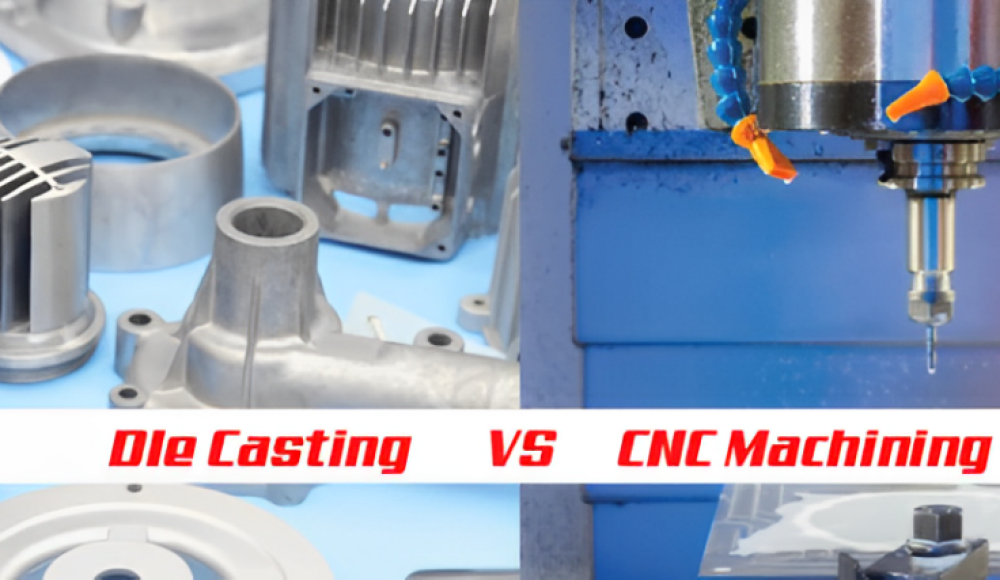
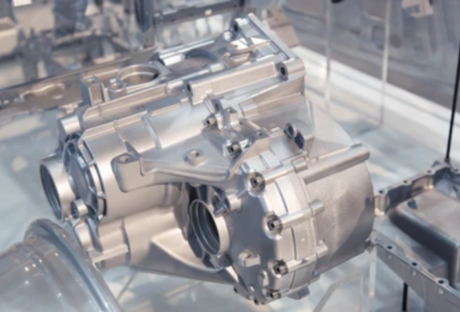
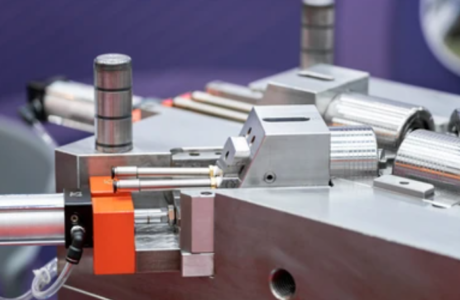
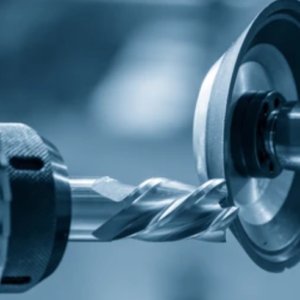
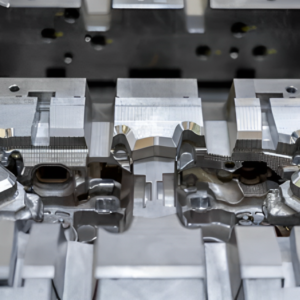
2 pensamentos "Um guia completo sobre fundição sob pressão versus usinagem CNC”